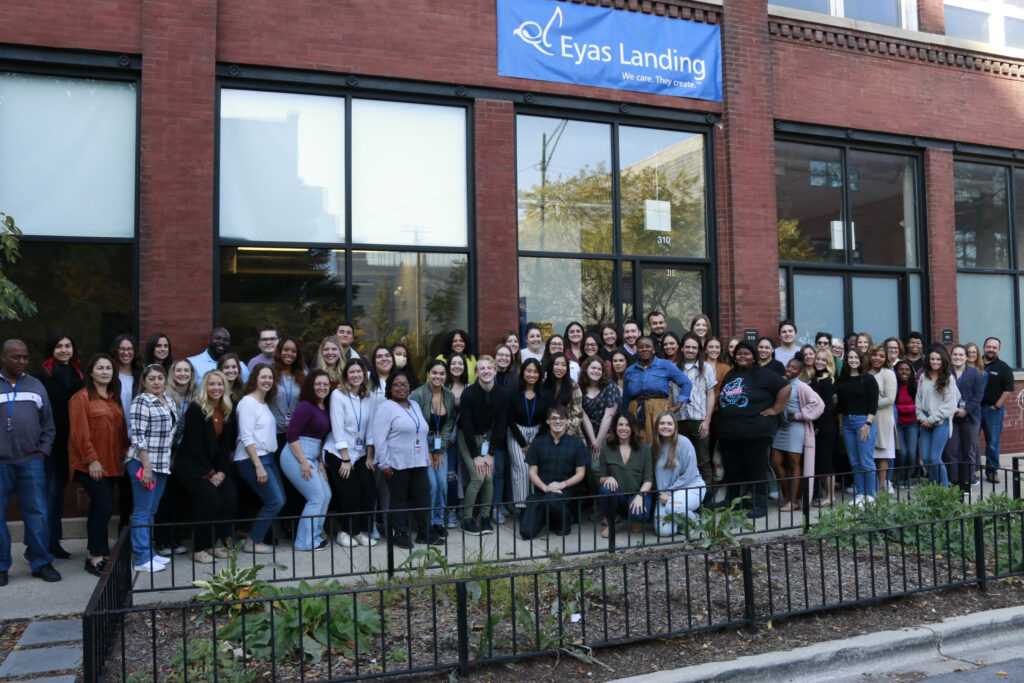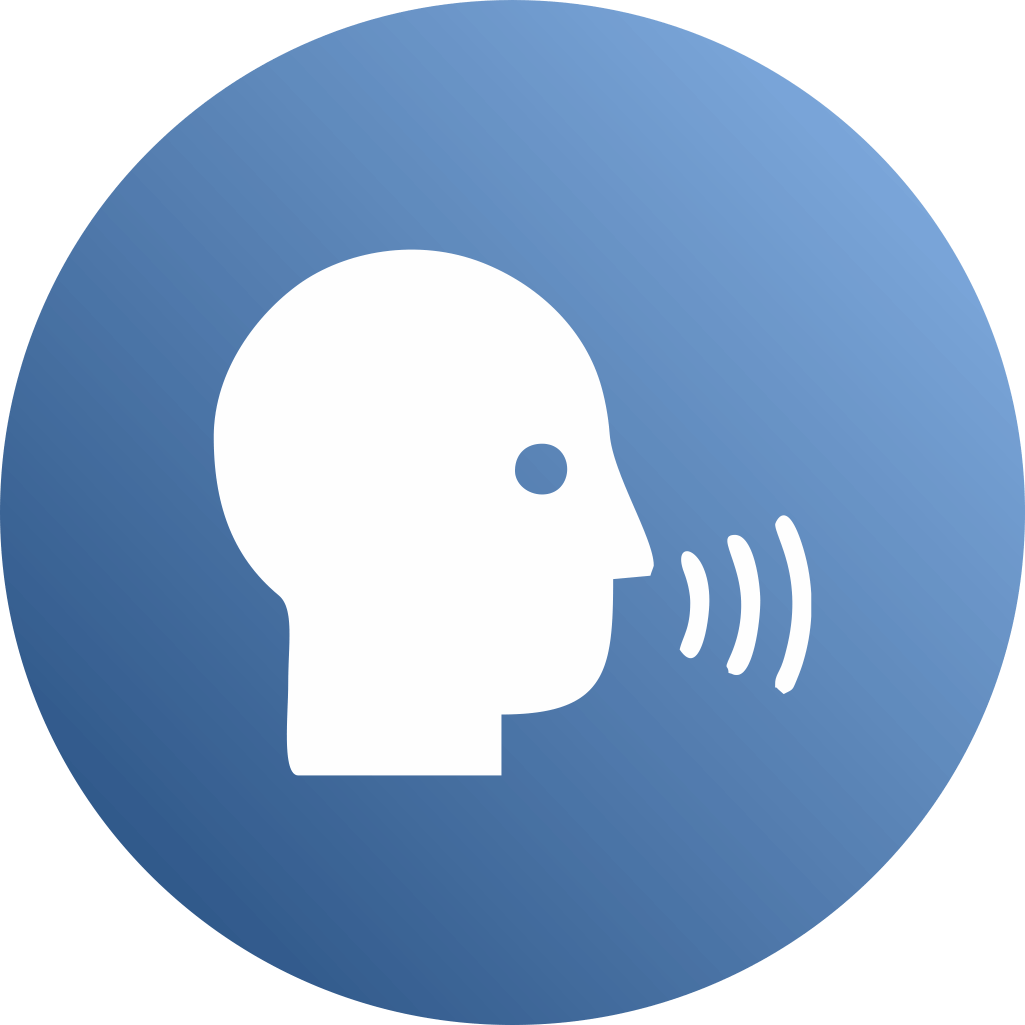Who makes up the Feeding Therapy team?
Who makes up the Feeding Therapy team?
Eyas Landing’s collaborative multidisciplinary team ensures the best possible therapeutic interventions are used during mealtimes. The inter-professional team includes occupational therapists, speech therapists, developmental therapists, and registered behavior technicians. Our Registered Dietitian Nutritionist oversees the mealtime preparations and communications with our catering company.

Together, the Feeding Therapy team seamlessly collaborates with each child’s entire therapeutic team to address best practices and individualized treatment plans. This collaboration between our highly-educated, compassionate staff maximize therapeutic outcomes and help support our clients to reach their fullest potential. At Eyas Landing, we value evidence-based practice, client-centeredness, community, diversity, collaboration, and flexibility.
What is Feeding Therapy?
At Eyas Landing, feeding therapy aims to help children develop the skills they need to eat and have healthy mealtime routines. Mealtime interventions can significantly improve a child’s overall health and well-being. Our Registered Dieticians, Speech-Language Pathologists, and Occupational Therapists are trained in understanding the significant emotional impact on a family when raising a child with picky eating and/or a limited diet. Therapists recognize that feeding is one of the most complex activities one engages in during early childhood and strive to be empathetic to the needs of the children and families.
Feeding Therapy Techniques
Evidence shows that children with Autism and sensory processing differences benefit from consistent mealtime routines and being slowly introduced to new foods. Therefore, the therapist works with the family to customize the therapy sessions to best reflect the child’s familiar mealtime routine and environment.
Feeding Therapists also use the following evidence-based techniques during their sessions:
Feeding Therapists also use the following evidence-based techniques during their sessions:
Feeding Therapy Adaptive Equipment
Eyas Landing is designed to work towards functional independence, meaning one child’s fork may look different from the next. Each child is unique in their skills and capacities. For example, a student may benefit from using an angled utensil to increase their feelings of success by promoting their ability to bring food to their mouth without spilling. A variety of adaptive equipment is used during mealtimes to foster these positive results.
Goal of Feeding Therapy
The first goal of the feeding team is that the mealtime environment is safe and supportive. Once children are able to maintain a regulated state in these environments, the team can address functional mealtime skills such as cup drinking, oral motor skills such as chewing and acceptance of non-preferred foods through graded consistent exposure and modeling.
Long term goals are to target increased food consumption and variety in diets to promote nutrition and health. Ultimately, the goal is for your child is to accept a wide variety of foods in their repertoires, eat a well-balanced and nutritious diet, and generalize these skills to outside environments.
Data for feeding therapy focuses on functional mealtime skills, oral motor skills, participation, and food consumption within fruits, grains, proteins, and vegetables. Setting feeding goals begins upon enrollment with the participation of the caregivers and therapists.
Progress is shared via therapy note and in-person after each therapy session. This allows for collaboration between the therapists and the family to ensure generalization of all mealtime strategies.
What is Nutrition Therapy?
What is Nutrition Therapy?
Are you concerned your child is lacking proper nutrition? Looking to improve mealtime with in-person tips, or virtual support in your home? Worried the “picky phase” has lasted too long?
Nutrition Therapy is here to help!
If you answered “yes” to any of the questions above, your child can work with our Board Certified Specialist in Pediatric Nutrition, Registered Dietitian (RDN) to target picky eating, independence at mealtime, diet planning, and toilet training.
How to participate in Nutrition Therapy?
Individual Nutrition Therapy
- Target: consumption of food groups lacking in the diet while building confidence around new food.
- Child-paced and multidisciplinary approach to mealtime.
- EAT – UP model, behavioral momentum and positive association are common strategies used.
Group Nutrition Therapy
- Peer motivated environment.
- Learn about healthy eating.
- Practice handwashing.
- Cook easy recipes together!
Virtual Nutrition Therapy
- Similar to “individual NT” but at home!
- RDN can virtually connect with you and your child during the day to target feeding therapy within the comfort of your own home. Highly recommended if mealtime challenges are mainly taking place at home!
Nutritionists also use the following evidence-based techniques during their sessions:
Nutritionists also use the following evidence-based techniques during their sessions:
Allergies and Dietary Restrictions
The feeding team at Eyas Landing is experienced in providing therapeutic interventions to children with dietary restrictions, feeding tubes, allergies or food intolerance. During the initial evaluation, families work with the RDN in creating which foods should be brought in to incorporate during therapy sessions and align with Eyas Landing’s nut-free policy.
The expert feeding team is trained in a variety of approaches to target the individualized needs of any child with challenges in feeding.




